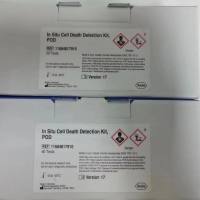In Situ Detection of HCV: An Overview
互联网
526
Hepatitis C virus (HCV) is the agent responsible for the majority of cases of the parenterally transmitted non-A, non-B hepatitis. The major obstacles to its discovery were the low level of replication in the infected host, both natural and experimental, and the low immunogenicity of its proteins, making it difficult to characterize antigen-antibody systems associated with this virus (1 ). The genome of HCV is a (+) single-stranded RNA of about 9400 nucleotides, genetically related to the flavi- and pestiviruses (2 ). HCV RNA can be detected in infected individuals by reverse transcripterase (RT) and polymerase chain reaction (PCR)-based assays, which underscore the low replicative levels of HCV. The fine mechanisms of the pathogenesis of HCV-associated liver damage are unknown. This is owing both to the limited availability of experimental animal models (chimpanzees) and to the difficulties in reproducing in vitro infection models. The abovementioned low titer of the virus in clinical samples has hampered the studies on the viral life cycle in vivo. These problems are reflected by the conflicting results that have been reported by the investigators who attempted to localize HCV products in infected tissues by in situ hybridization (ISH), immunohistochemistry, and in situ PCR. The published data are sometimes discrepant and in some cases have been very difficult to reproduce. The scope of this chapter is to review the data reported in the literature, whereas the technical procedures are discussed in more detail elsewhere in this book.









